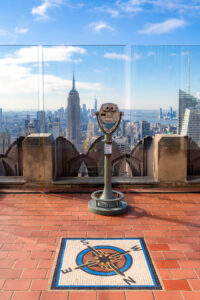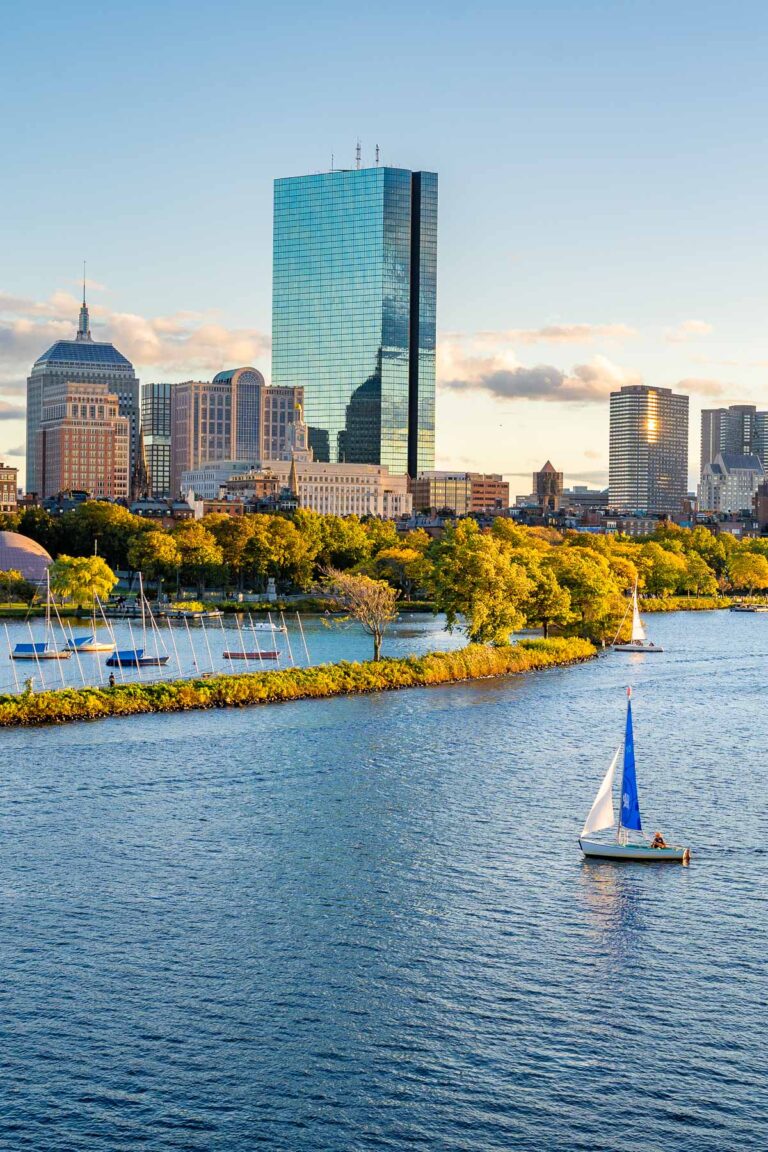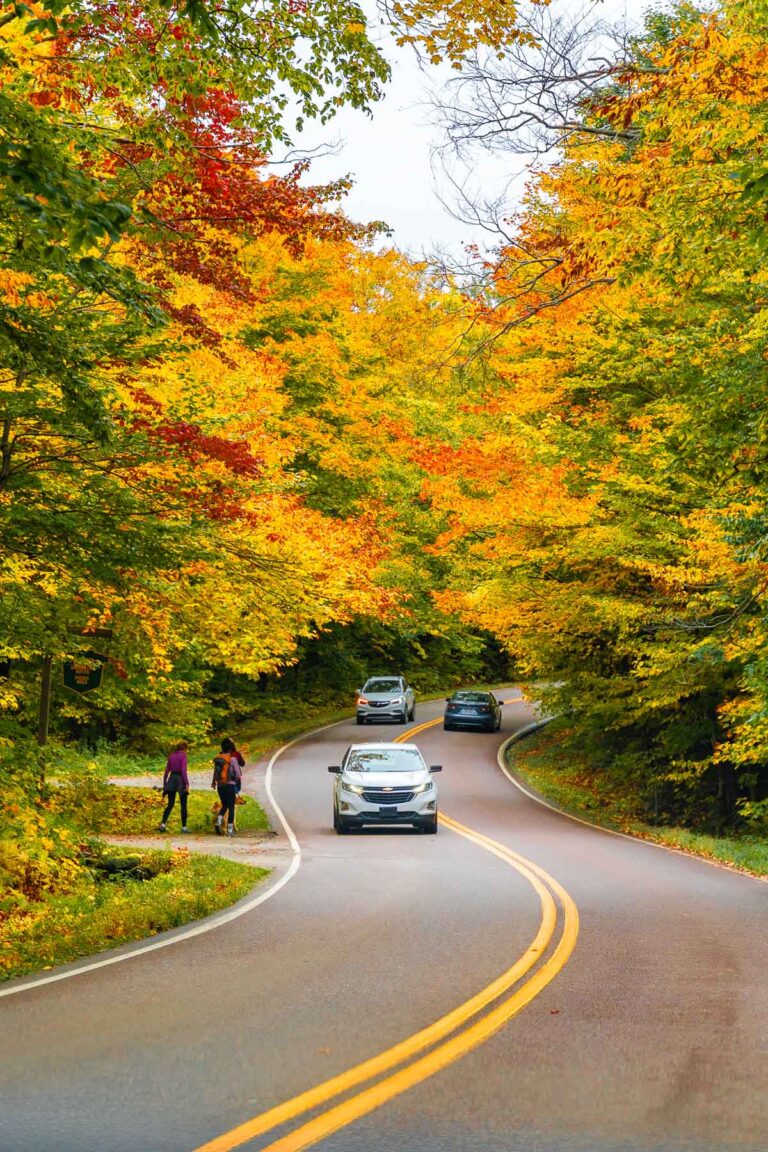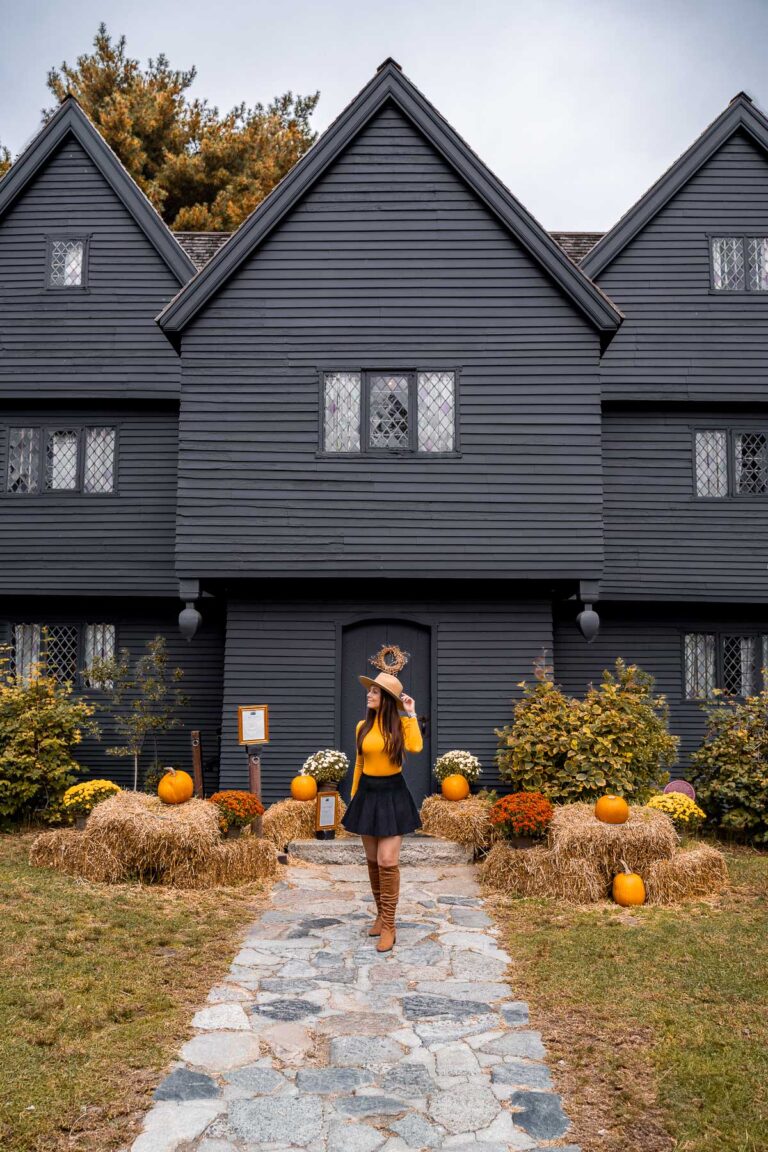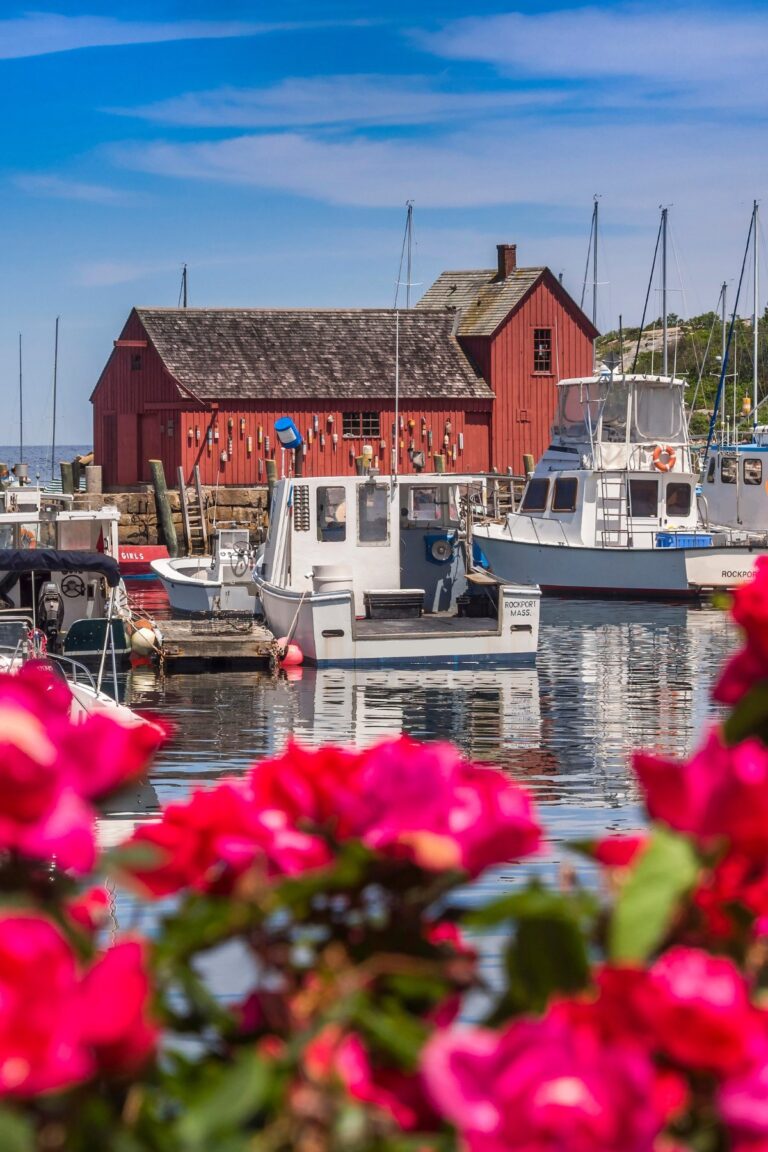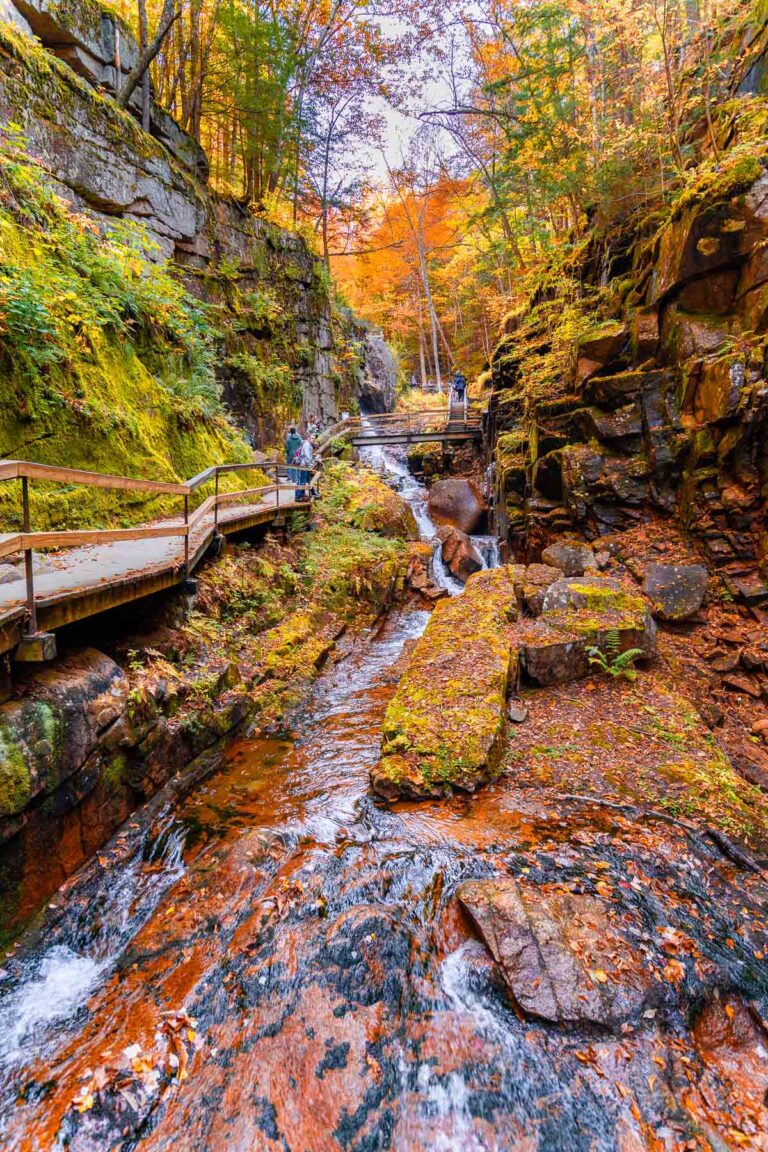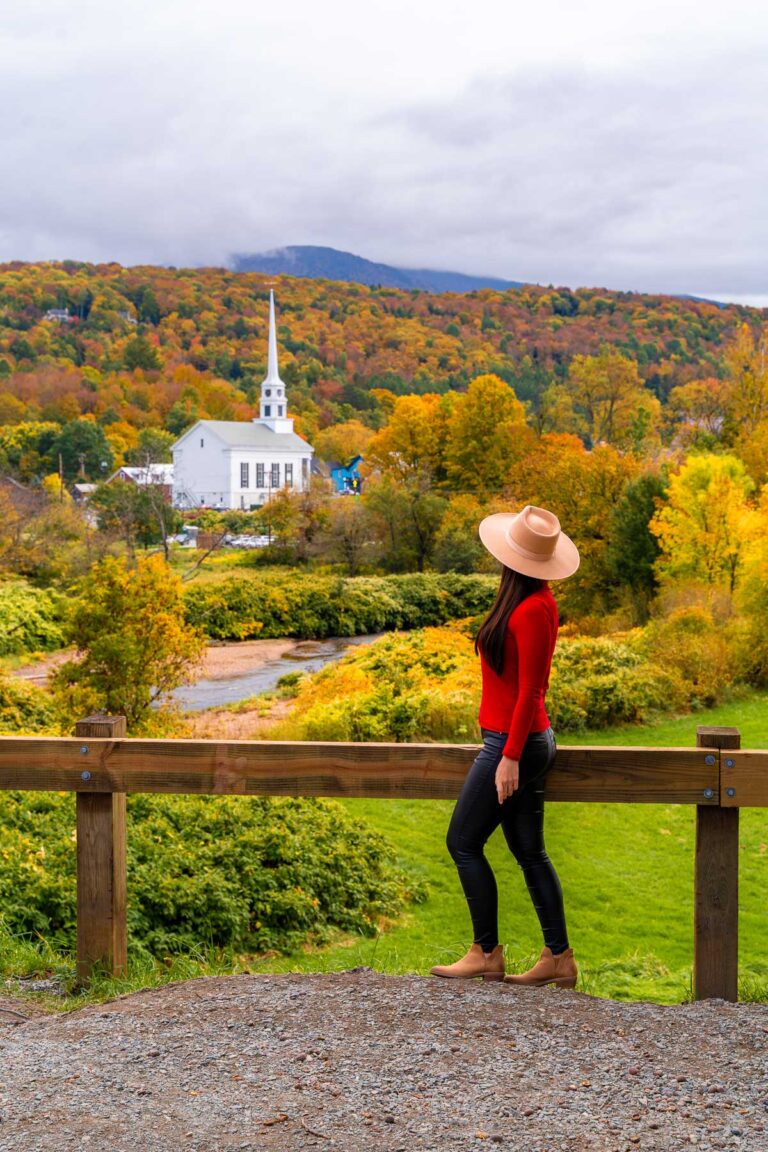10 Best US National Parks to Visit in the Fall
Looking for the best national parks in the fall? I got you covered!
Fall is one of the most beautiful times to explore the outdoors in the US. Cooler weather makes hiking a lot more enjoyable, the crowds are smaller, and in many places the scenery changes completely with the season.
Some parks are famous for their fall foliage, like Acadia, Shenandoah, and the Smoky Mountains. Others, like Joshua Tree and Death Valley, are finally pleasant to visit once the summer heat fades away. No matter what kind of trip you’re planning, fall brings a different side to the parks that’s worth experiencing!
Here are 10 incredible national parks to visit in the fall, from classic leaf-peeping destinations to desert landscapes that shine in cooler weather.
Disclaimer: Some of the links in this post are affiliate links, which means I may earn a small commission if you make a purchase, at no extra cost to you.
No time to read now?
Pin it for later!
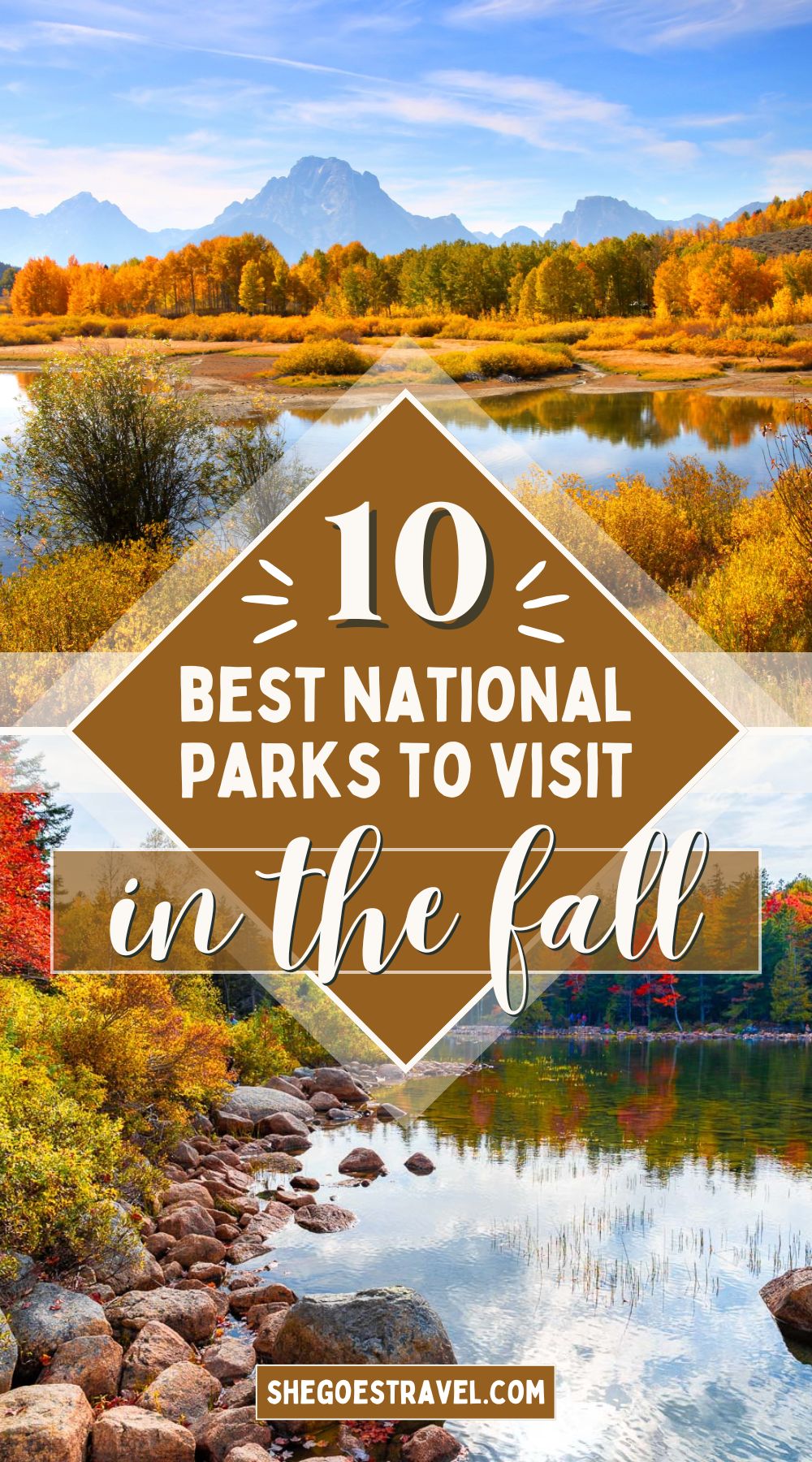
Best National Parks to Visit in the Fall
1. Acadia National Park, Maine
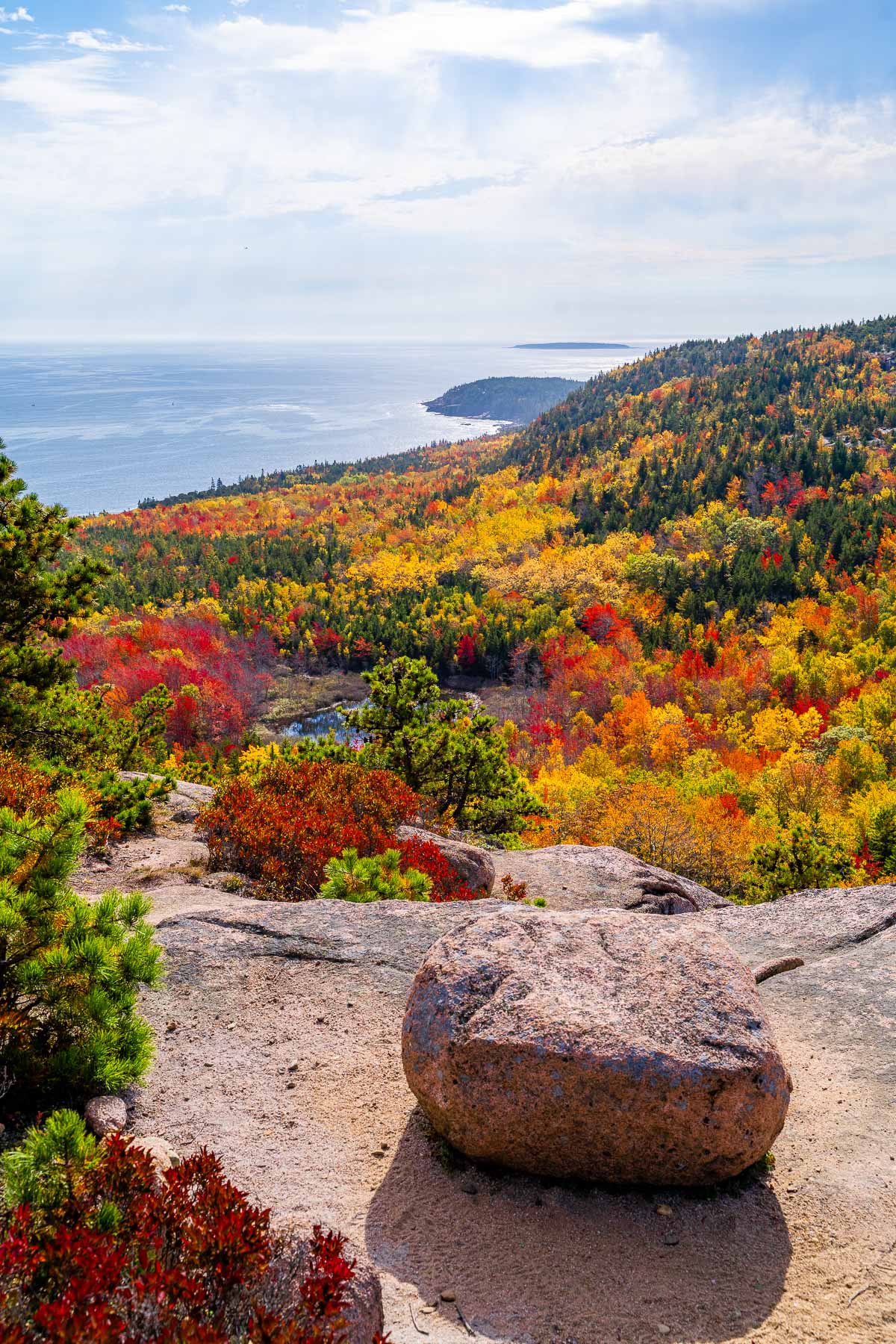
⭐ Highlights: Peak fall foliage, coastal cliffs, scenic drives
🌡️ Average temperature: 40–60°F (4–15°C)
✈️ Closest airport: Bangor International Airport (BGR)
💵 Entrance fee: $35 per vehicle (7 days)
🏨 Where to stay: Bar Harbor Grand Hotel, Bar Harbor Villager Motel
Acadia is one of the most beautiful national parks to visit in the fall, especially when the foliage peaks in early to mid-October.
The Park Loop Road is the easiest way to see a mix of coastline, mountains, and colorful trees, with plenty of pull-offs for quick photo stops. Cadillac Mountain is another must, and if you book a vehicle reservation, you can catch sunrise or sunset from the summit.
For hiking, the Jordan Pond Path is an easy loop with great views of the Bubbles, while the Beehive Trail is a short but steep climb with iron rungs and epic lookouts.
After exploring, head into Bar Harbor for restaurants, shops, and plenty of cozy hotels. Staying here gives you quick access to the park while still having a lively base to return to each evening.
Read more about Acadia:
- 10 Best Things to Do in Acadia National Park in the Fall
- How to Spend One Day in Acadia National Park
- 2 Days in Acadia National Park: A Complete Fall Itinerary
2. Great Smoky Mountains National Park, Tennessee/North Carolina
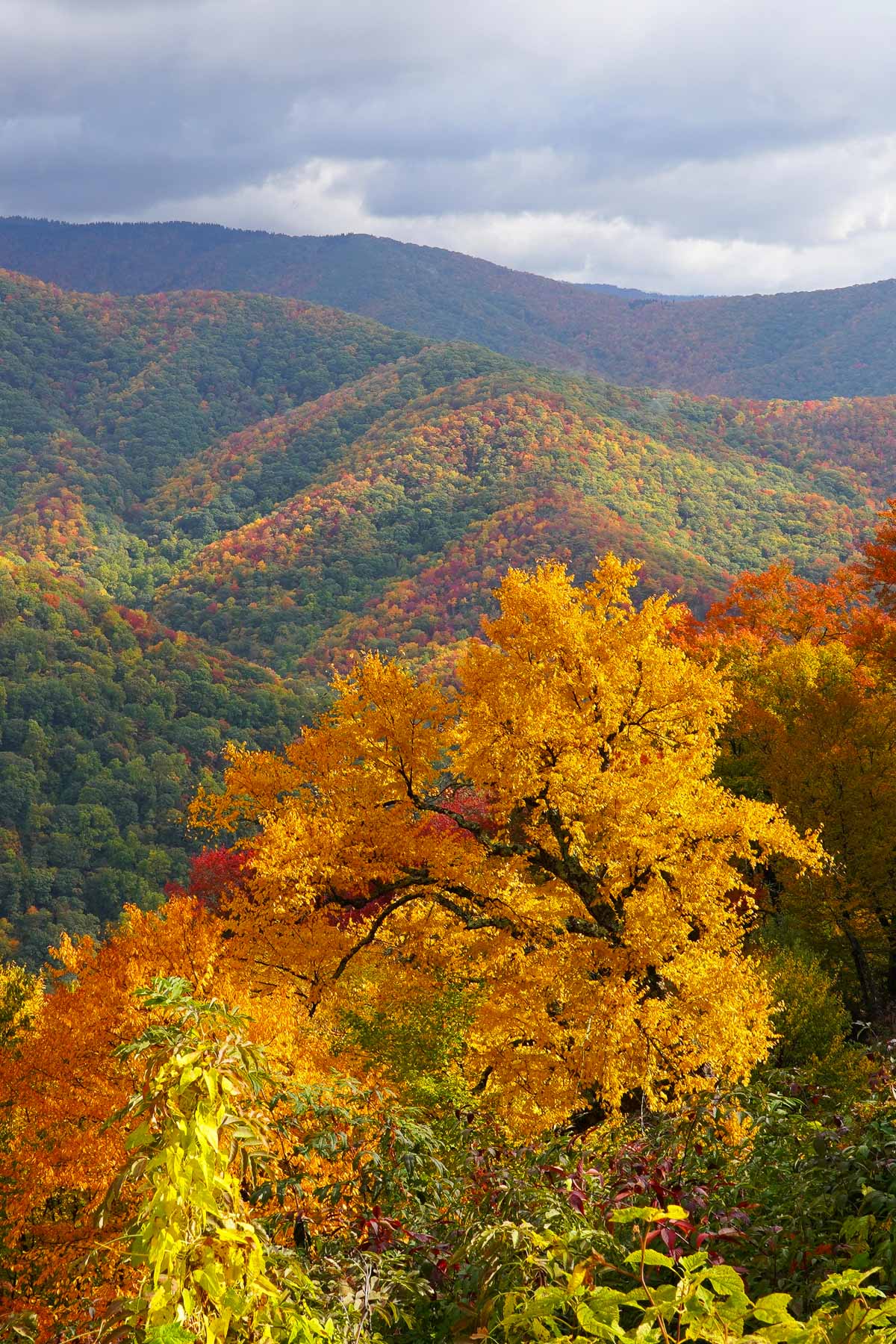
⭐ Highlights: Fall foliage, scenic drives, wildlife spotting
🌡️ Average temperature: 45–65°F (7–18°C)
✈️ Closest airport: McGhee Tyson Airport, Knoxville (TYS)
💵 Entrance fee: Free
🏨 Where to stay: Gatlinburg Inn, Greystone Lodge on the River
The Smokies are one of the most famous national parks in the fall, with over 100 species of trees that turn shades of red, orange, and yellow from late September through early November.
The peak usually falls in mid to late October, but colors change at different elevations, so you can catch them for several weeks.
One of the best things to do is drive Newfound Gap Road, which runs 31 miles across the park with plenty of overlooks.
Cades Cove is another must-see for its mix of historic buildings, open valleys, and chances to spot black bears. For hiking, try the Alum Cave Trail or Laurel Falls, both doable in half a day.
Most visitors stay in Gatlinburg or Pigeon Forge, where you’ll find plenty of hotels and restaurants just outside the park entrance.
Since the Smokies are free to enter, it’s a great budget-friendly fall trip, but do expect crowds during peak foliage.
3. Shenandoah National Park, Virginia
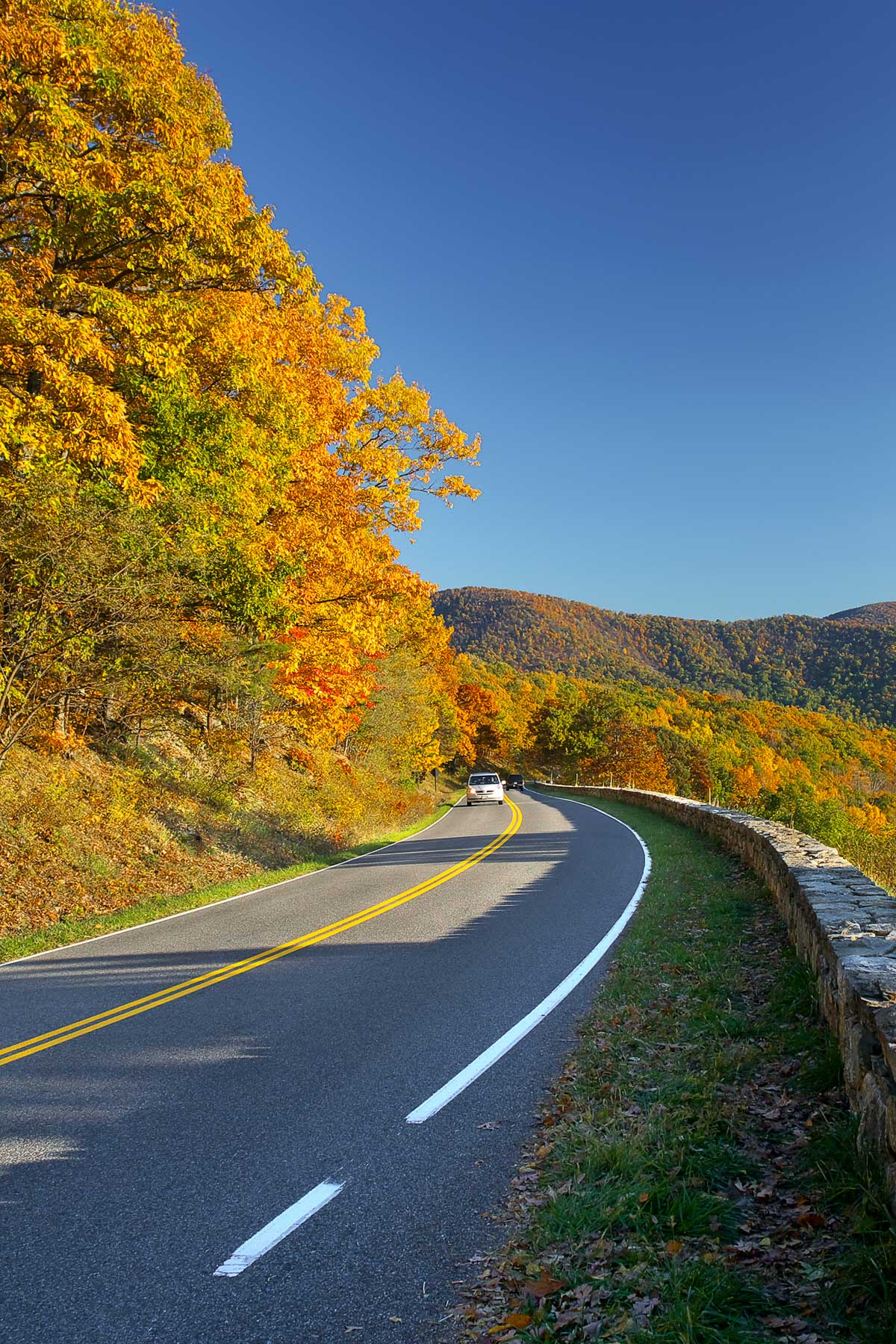
⭐ Highlights: Skyline Drive, Blue Ridge Mountains, waterfalls
🌡️ Average temperature: 45–65°F (7–18°C)
✈️ Closest airport: Washington Dulles International Airport (IAD)
💵 Entrance fee: $30 per vehicle (7 days)
🏨 Where to stay: The English Inn of Charlottesville, The Mimslyn Inn
Shenandoah is one of the top national parks to visit in fall, especially if you love a good scenic drive. The 105-mile Skyline Drive runs the length of the park and has over 70 overlooks, each with sweeping views of the Blue Ridge Mountains.
Fall colors usually peak in mid to late October, but like the Smokies, you’ll see changes at different elevations throughout the season.
If you want to stretch your legs, hike to Dark Hollow Falls, one of the park’s most popular waterfall trails, or try Stony Man for an easier summit hike with big views.
For something more challenging, the Old Rag hike is famous for its rocky scramble and 360-degree lookout at the top.
There are a couple of lodges inside the park, like Skyland and Big Meadows, but they book up quickly during foliage season. If those are full, towns like Luray and Front Royal make convenient bases with more hotel options.
4. Rocky Mountain National Park, Colorado
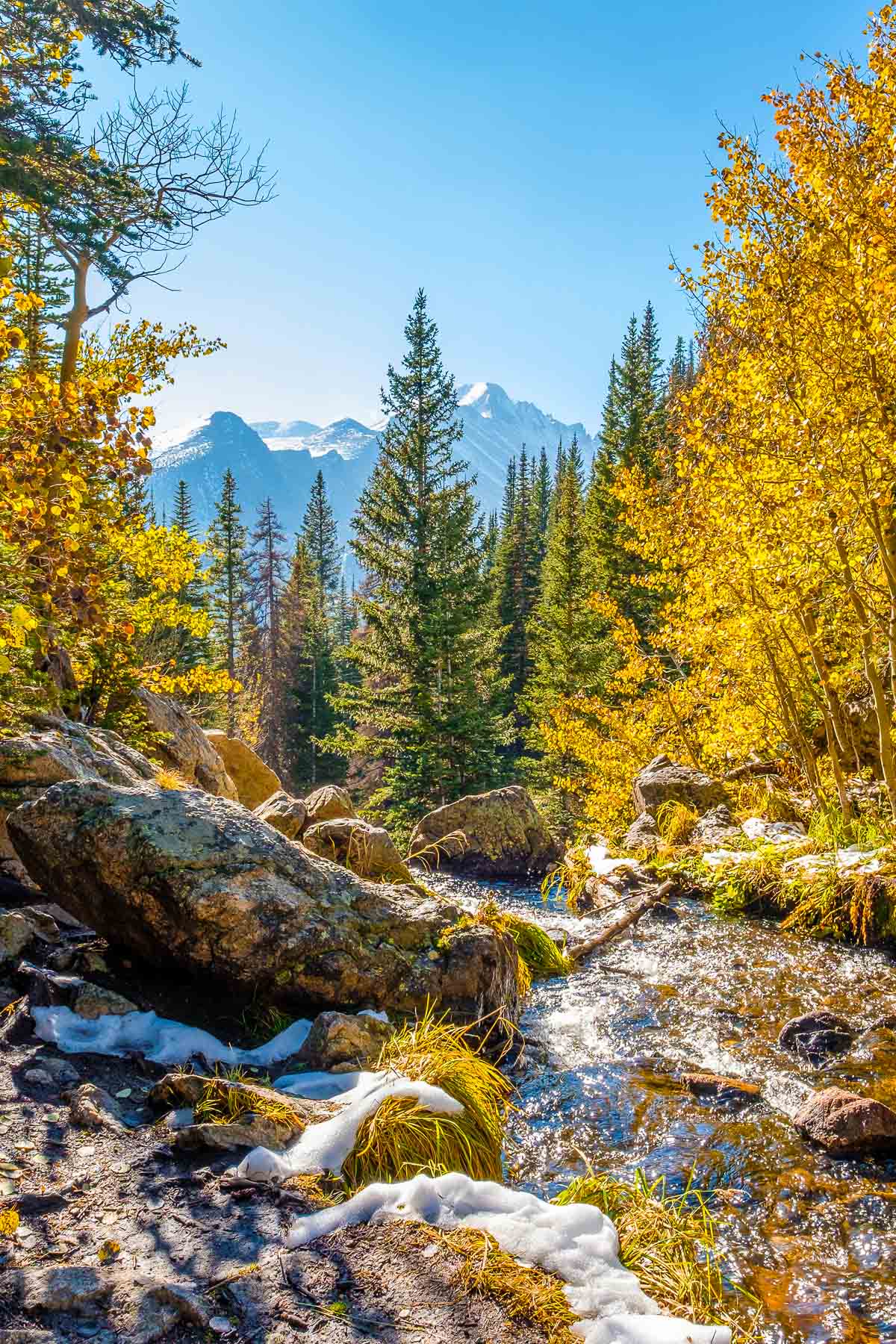
⭐ Highlights: Golden aspens, mountain views, elk rutting season
🌡️ Average temperature: 30–60°F (–1–15°C)
✈️ Closest airport: Denver International Airport (DEN)
💵 Entrance fee: $30 per vehicle (1 day) or $35 per vehicle (7 days)
🏨 Where to stay: Streamside on Fall River, Murphy’s Resort
Fall in Rocky Mountain National Park is all about the aspens. By late September, entire hillsides turn bright yellow, and with snow often dusting the high peaks, the views are incredible. Early fall is also elk rutting season, so you might hear bugling calls echoing through the valleys.
Trail Ridge Road is one of the main highlights, climbing over 12,000 feet with overlooks that show off the changing colors below. Keep in mind that snow can close parts of the road by mid-October, so go earlier in the season if this drive is on your list.
For hiking, Bear Lake is an easy starting point, with trails leading to Dream Lake and Emerald Lake for some of the park’s best scenery.
Most visitors stay in Estes Park, the gateway town on the east side of the park. It has plenty of hotels, restaurants, and shops, plus quick access to the main entrances. Book early if you’re visiting in fall since this is one of the busiest times of year!
5. Grand Teton National Park, Wyoming
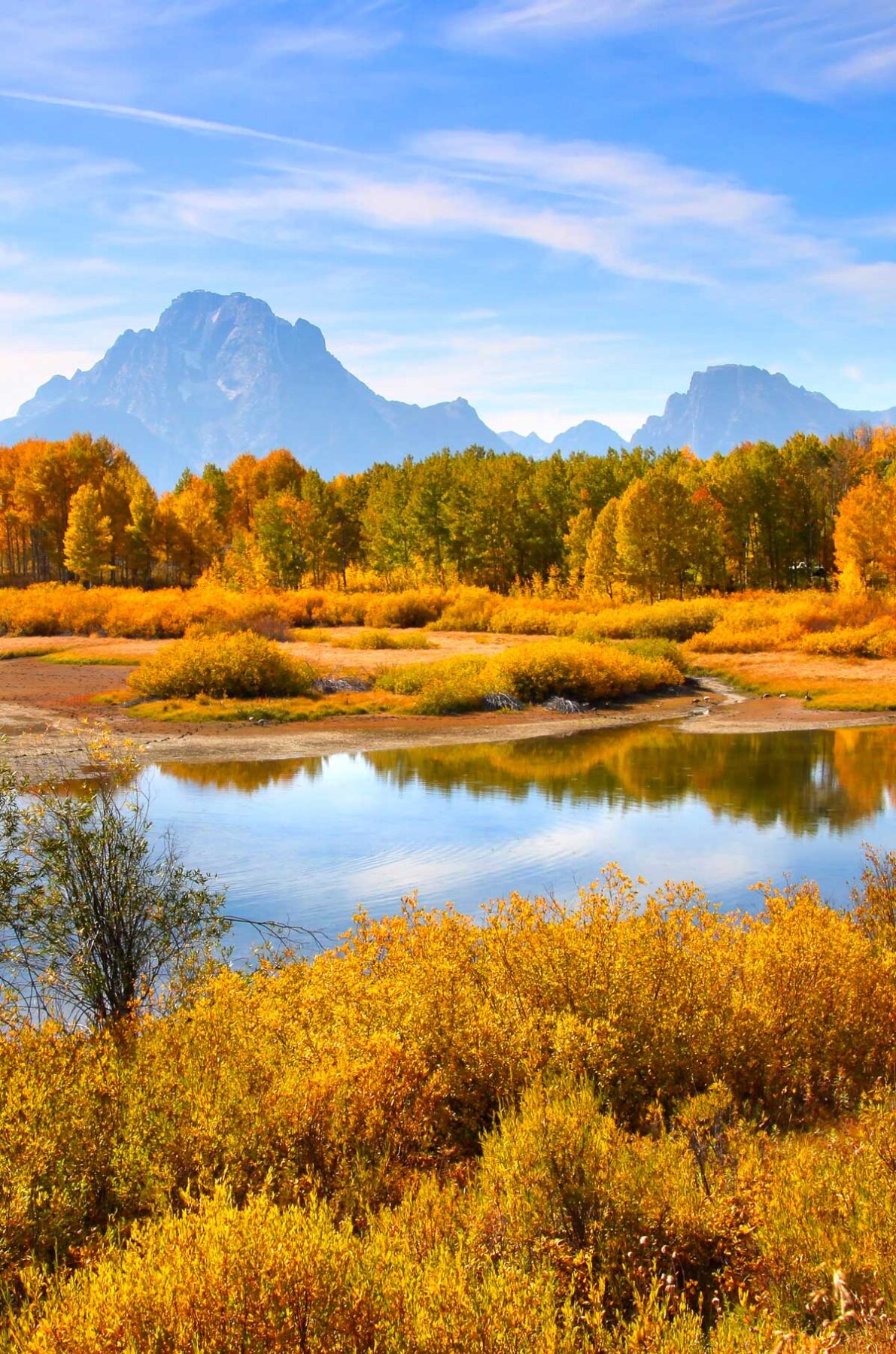
⭐ Highlights: Bright yellow aspens, mountain backdrops, wildlife
🌡️ Average temperature: 25–55°F (–4–13°C)
✈️ Closest airport: Jackson Hole Airport (JAC)
💵 Entrance fee: $35 per vehicle (7 days)
🏨 Where to stay: Jackson Lake Lodge, The Rockwell Inn
Few places combine fall colors and dramatic scenery like Grand Teton National Park! The jagged peaks rise straight out of the valley, and by late September, the aspen groves turn a brilliant gold.
Fall is also one of the best times to spot wildlife, with moose, elk, and bears often active before winter sets in.
For views, the Oxbow Bend overlook is a classic, with Mount Moran reflected in the Snake River, while Schwabacher Landing is a favorite for photographers at sunrise. If you want to hike, try the Taggart Lake Trail, an easy loop with picture-perfect views of the Tetons.
Jackson is the best base for exploring, with a mix of boutique hotels, lodges, and restaurants about 20 minutes from the park entrance.
If you prefer staying inside the park, Jackson Lake Lodge is bookable online and has massive windows looking right out at the mountains.
6. Yosemite National Park, California
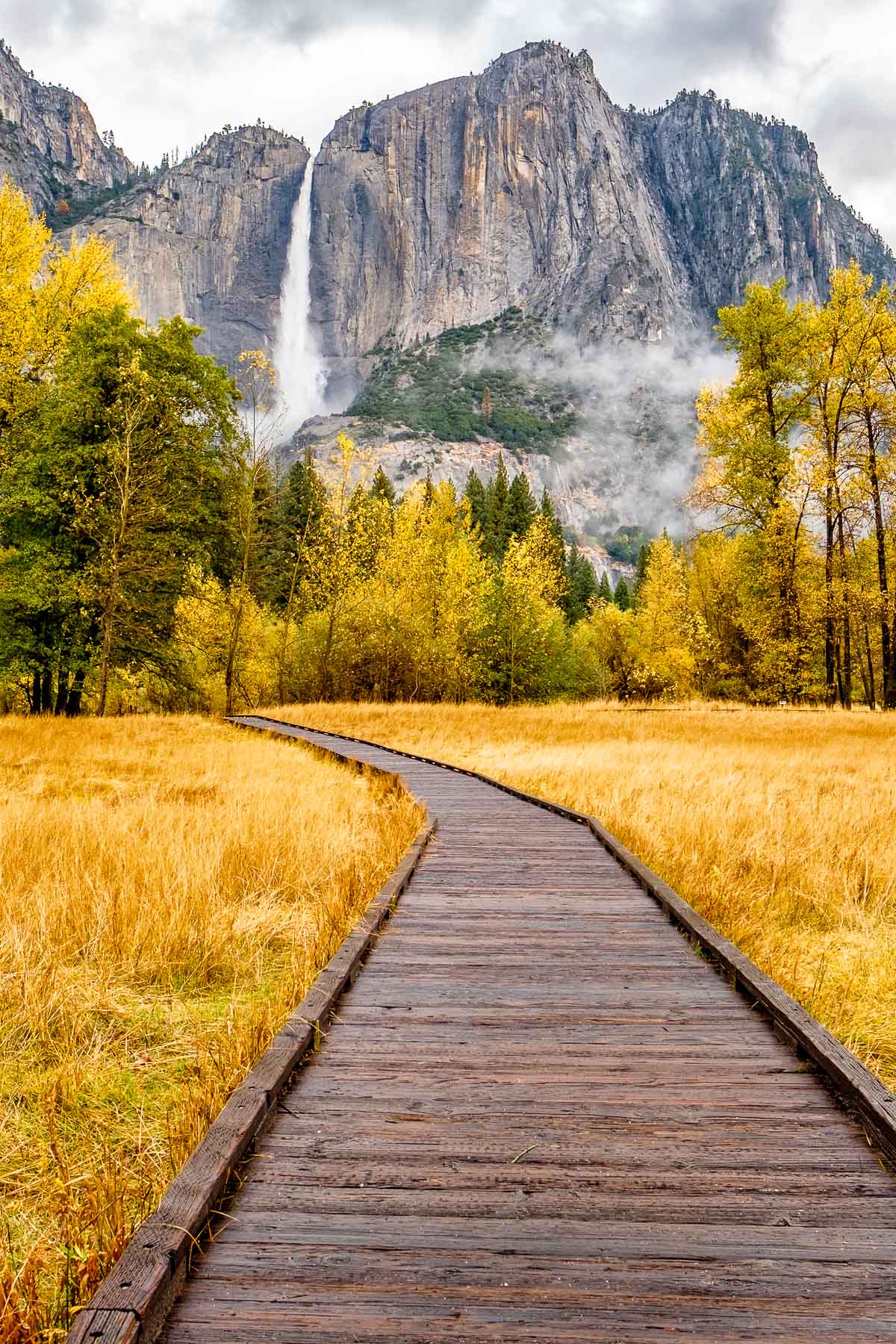
⭐ Highlights: Granite cliffs, waterfalls, fall colors in Yosemite Valley
🌡️ Average temperature: 40–70°F (4–21°C)
✈️ Closest airport: Fresno Yosemite International Airport (FAT)
💵 Entrance fee: $35 per vehicle (7 days)
🏨 Where to stay: Yosemite Valley Lodge, Tenaya at Yosemite
Yosemite is one of the best national parks to visit in fall, especially if you want to avoid the heavy summer crowds.
The air is cooler, the valley is quieter, and the leaves around Cook’s Meadow and Yosemite Valley turn golden. Waterfalls usually slow down in late summer, but they often pick back up again after the first autumn rains.
Hiking is a highlight this time of year. The Mist Trail to Vernal and Nevada Falls is still accessible into October, while Sentinel Dome and Taft Point give you sweeping views of Yosemite Valley without the summer heat.
For an easy option, take a walk through the valley floor for postcard-perfect views of Half Dome framed by fall colors.
If you want to stay inside the park, Yosemite Valley Lodge is a good option, or you can base yourself outside the entrance in El Portal or Oakhurst. Fall is a great time to enjoy Yosemite at a slower pace before the first snow arrives.
7. Zion National Park, Utah
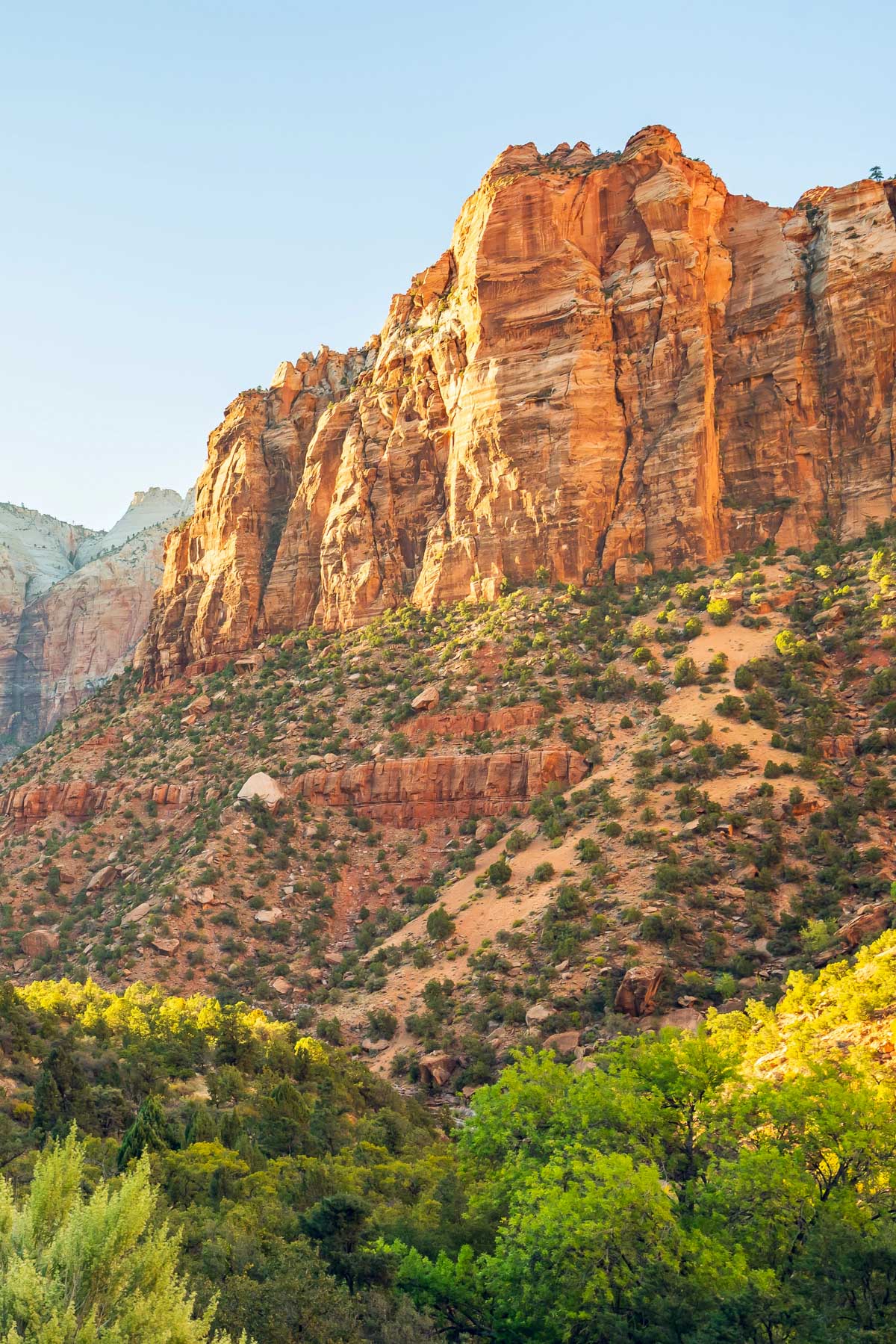
⭐ Highlights: Red rock canyons, cottonwood trees, perfect hiking weather
🌡️ Average temperature: 45–75°F (7–24°C)
✈️ Closest airport: St. George Regional Airport (SGU)
💵 Entrance fee: $35 per vehicle (7 days)
🏨 Where to stay: Cliffrose Springdale, Cable Mountain Lodge
Fall is one of the best seasons to explore Zion. The summer heat finally fades, making it much more comfortable to hike the park’s iconic trails like Angels Landing and The Narrows.
Cottonwood trees turn shades of yellow along the Virgin River, which adds even more contrast to the red canyon walls.
Zion is also one of the best national parks to visit in fall if you want fewer crowds. September and October are still busy, but nothing like the peak summer months.
The shuttle system runs through late November, so you can still access the main canyon without worrying about parking.
Most people stay in Springdale, which sits right outside the park entrance and has plenty of hotels, restaurants, and gear rentals. You can walk or take the town shuttle to the visitor center, which makes it easy to explore without driving every day.
8. Bryce Canyon National Park, Utah
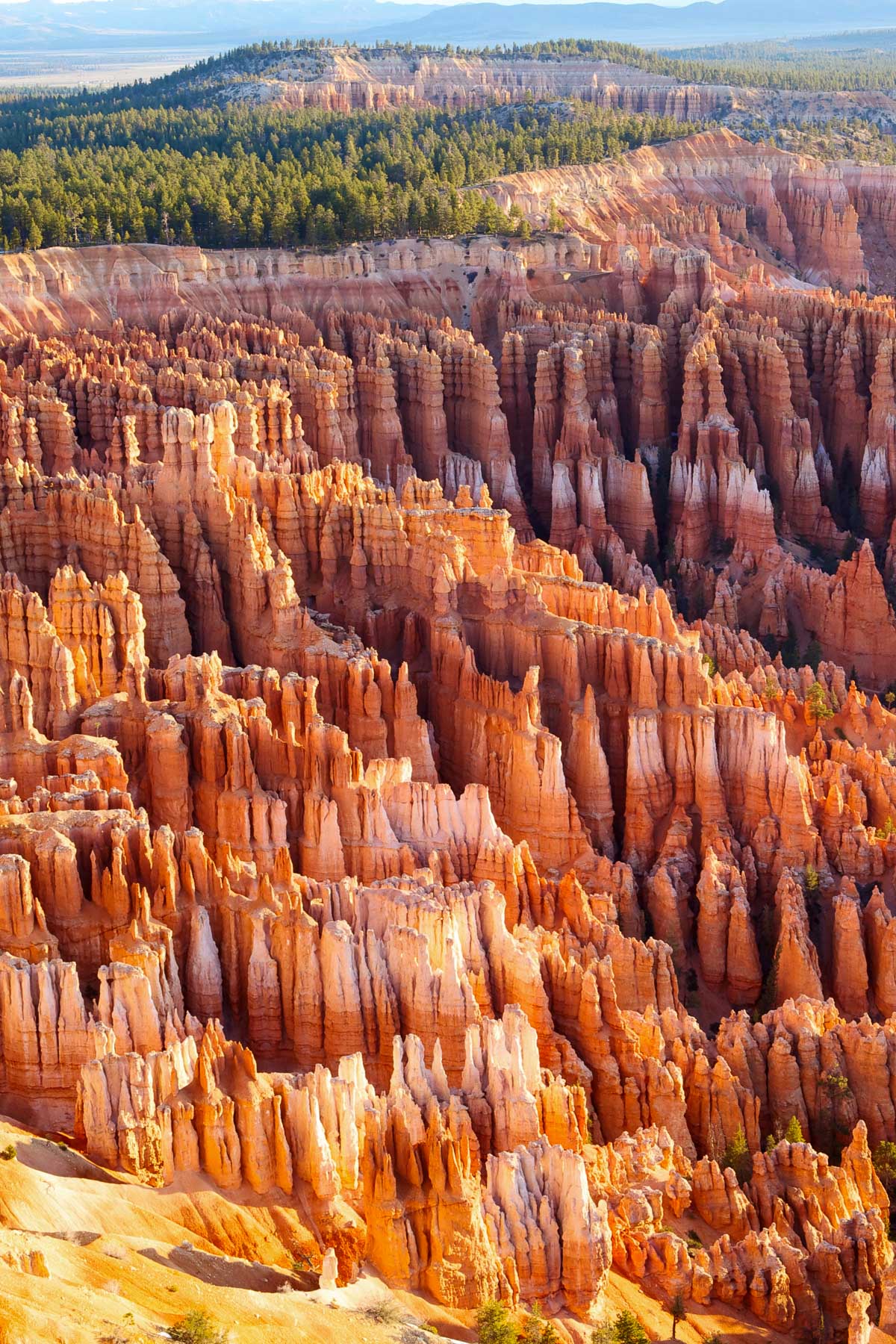
⭐ Highlights: Hoodoos, colorful cliffs, hiking trails
🌡️ Average temperature: 25–60°F (–4–15°C)
✈️ Closest airport: Cedar City Regional Airport (CDC)
💵 Entrance fee: $35 per vehicle (7 days)
🏨 Where to stay: Best Western PLUS Ruby’s Inn, Mountain Ridge Cabins & Lodging
Visiting Bryce Canyon is a very different experience compared to other national parks in the fall. The weather is cooler, which makes the hikes into the amphitheater much more comfortable than in summer.
At this high elevation, you might even catch a dusting of snow on the hoodoos by late October, which makes the red rock formations stand out even more.
The Navajo Loop and Queen’s Garden Trail is the most popular hike and one of the best ways to see Bryce up close. It winds past towering hoodoos like Thor’s Hammer and takes about two hours to complete.
If you want something longer, the Peekaboo Loop connects with the Navajo Trail for a full day of hiking. For an easier option, stick to the Rim Trail, which has great viewpoints like Inspiration Point and Bryce Point.
Staying inside the park at The Lodge at Bryce Canyon puts you right next to the amphitheater, but rooms are limited and sell out quickly in fall.
Ruby’s Inn just outside the entrance is the most convenient alternative, with hotel rooms, cabins, and restaurants all in one spot.
9. Joshua Tree National Park, California

⭐ Highlights: Unique Joshua trees, desert hikes, rock formations
🌡️ Average temperature: 50–80°F (10–27°C)
✈️ Closest airport: Palm Springs International Airport (PSP)
💵 Entrance fee: $30 per vehicle (7 days)
🏨 Where to stay: Holiday Inn Express Hotel, Pioneertown Motel
Joshua Tree is one of the best national parks to visit in the fall if you want warm weather without the brutal summer heat.
By October, daytime temperatures drop into a comfortable range, which makes it a great season for hiking, climbing, and stargazing. The nights are cooler, and with little light pollution, the Milky Way is often visible.
Popular hikes include Hidden Valley, a short loop that winds through massive boulders, and Barker Dam, which gives you a mix of desert scenery and a bit of history. For something more challenging, try Ryan Mountain for panoramic views of the park.
If you’re not up for a hike, the Cholla Cactus Garden is an easy stop along the main road and looks especially beautiful in the early morning light.
Most visitors stay in nearby towns like Joshua Tree or Twentynine Palms, both of which have unique desert lodgings ranging from vintage motels to stylish Airbnbs. If you want something with character, the Pioneertown Motel is a fun choice with a bit of Old West charm.
10. Death Valley National Park, California and Nevada
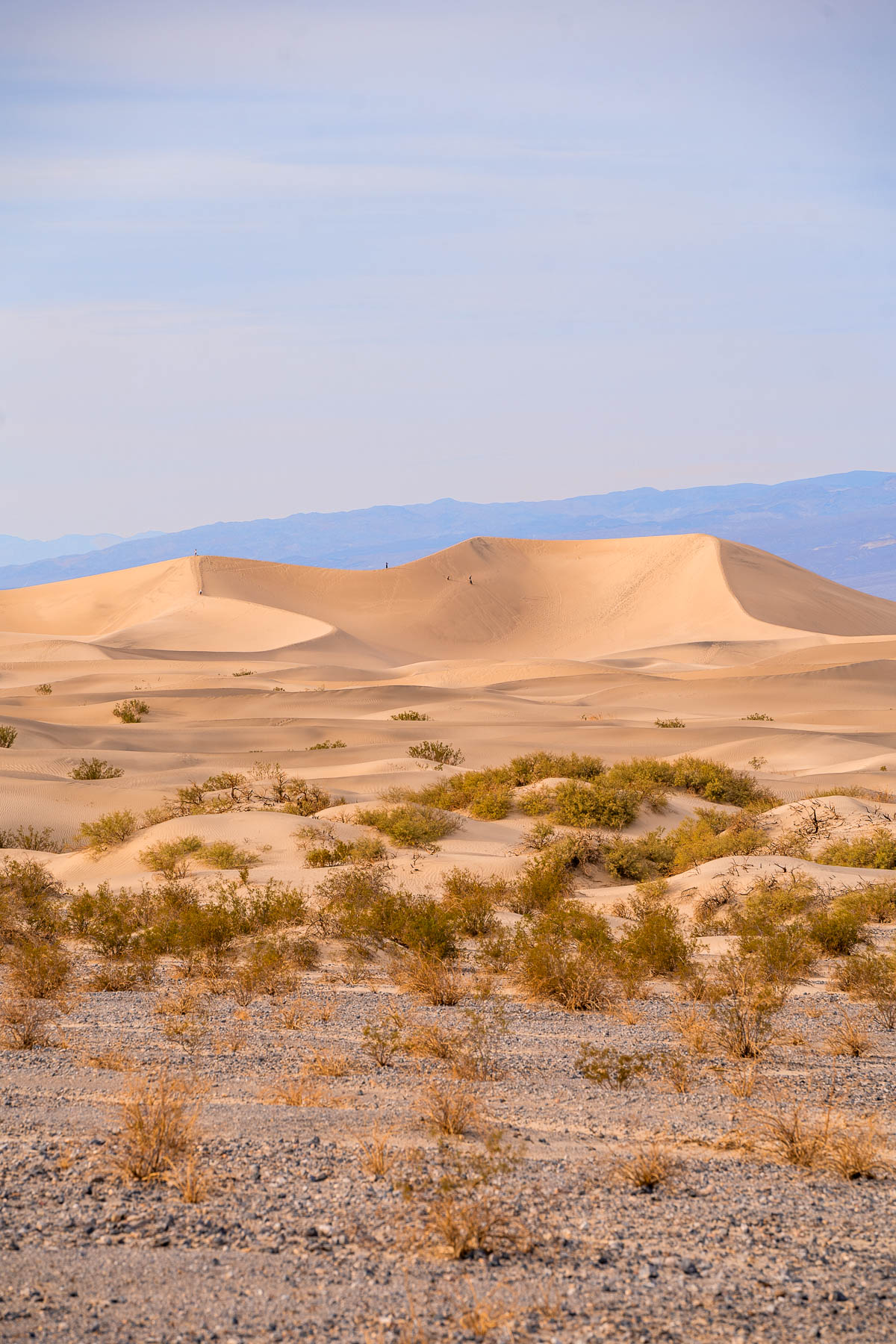
⭐ Highlights: Salt flats, colorful canyons, stargazing
🌡️ Average temperature: 55–85°F (13–29°C)
✈️ Closest airport: Harry Reid International Airport, Las Vegas (LAS)
💵 Entrance fee: $30 per vehicle (7 days)
🏨 Where to stay: The Inn at Death Valley, The Ranch At Death Valley
Fall is the best season to explore Death Valley, when daytime temperatures drop enough to make hiking and sightseeing safe again. By late October and November, highs are usually in the 70s and 80s, a big contrast to the 110°F summer heat!
With cooler days and clear skies, it’s also one of the top national parks in the fall for stargazing.
Some of the must-see spots include Badwater Basin, the lowest point in North America, and Zabriskie Point, which is especially beautiful at sunrise. The Mesquite Flat Sand Dunes are another highlight, with easy access and great light in the late afternoon.
If you want to explore further, drive through Artist’s Palette, where the rocks are streaked with pink, green, and purple from mineral deposits.
There are a few lodging options inside the park, including the historic Inn at Death Valley and the more casual Stovepipe Wells Village Hotel. Most visitors, however, use Las Vegas as a base and make the two-hour drive into the park for a day or two of exploring.

